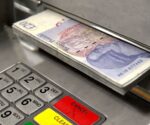Pension tax refunds hit nearly £50m as thousands overpay on withdrawals | Personal Finance | Finance
Britons reclaimed almost £50million in overpaid tax on pension withdrawals between July and September 2025, according to the latest figures from HMRC. More than 13,700 savers submitted reclaim forms over the three-month period, recovering an average of £3,539 each.
The data from HM Revenue and Customs (HMRC) shows the ongoing issue of overtaxation under the pension flexibility rules, with total refunds since 2015 now exceeding £1.5billion. Jon Greer, head of retirement policy at Quilter, said it was “extraordinary” that thousands are still being overtaxed a decade after pension freedoms were introduced, calling for reform to prevent errors rather than relying on repayments.” He added: “The system continues to work against the very flexibility it was designed to promote. Although HMRC has made changes to speed up repayments, these figures show the underlying problem persists.
“The PAYE system was built for regular employment income, not one-off pension withdrawals, and it continues to cause unnecessary complexity for retirees.”
Tom Selby, director of public policy at AJ Bell, added that these figures are “likely to only be the tip of the iceberg”, as they only capture those who fill in the relevant HMRC reclaim form.
He said: “In reality, many will be reliant on HMRC putting their affairs in order at the end of the tax year.”
The Government improved its tax code process in April 2025 to move people from an emergency code to paying the right amount of tax more quickly. However, Mr Selby pointed out: “That doesn’t help those taking a one-off withdrawal, who will continue to be overtaxed.”
Why are savers overtaxed on pension withdrawals?
Since 2015, HMRC has taxed the first flexible pension withdrawal of the tax year on a “Month 1” basis.
This approach divides a person’s annual tax allowances by 12 and applies them as if the payment were a regular monthly income, often leaving savers with unexpectedly large tax bills running into thousands of pounds.
While those who take regular payments or make multiple withdrawals during the year are usually corrected automatically through HMRC’s systems, anyone making a one-off withdrawal is likely to be left temporarily out of pocket until they reclaim the overpaid tax.
Mr Selby said: “It is possible to get your money back within 30 days, but only if you fill out one of three HMRC forms to reclaim your money. If you don’t, you are left relying on the efficiency of HMRC to repay you at the end of the tax year.”
How to avoid overtaxation
One way savers who are planning to take a single withdrawal in a tax year can potentially avoid the shock of a big overtaxation bill is by taking a notional withdrawal first. For example, a £1 withdrawal, or the smallest amount you’re able to.
Mr Selby said: “This should mean HMRC is able to apply the correct tax code to the second, larger withdrawal.”
How to claim money back
Those who are taking a steady stream of income via drawdown shouldn’t need to take any action, as HMRC will adjust your tax code to ensure that over the course of the year, you are taxed the correct amount.
However, if you make a single withdrawal then you will either need to fill out one of three forms or rely on HMRC putting you in the correct position at the end of the tax year.
According to AJ Bell, the form you need to fill out will depend on how you have accessed your retirement pot:
- If you’ve emptied your pot by flexibly accessing your pension and are still working or receiving benefits, you should fill out form P53Z,
- If you’ve emptied your pot by flexibly accessing your pension and aren’t working or receiving benefits, you should fill out form P50Z,
- If you’ve only flexibly accessed part of your pension pot, then use form P55.
Provided you fill out the correct form, HMRC says you should receive a refund of any overpaid tax within 30 days.









